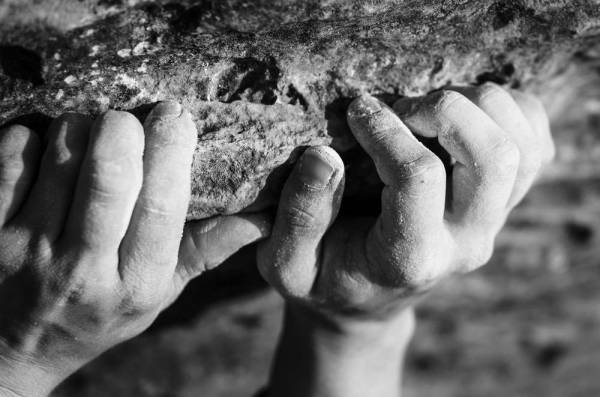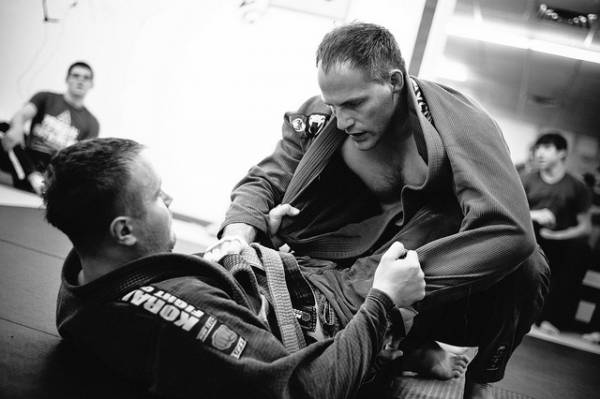Grip strength is crucial to almost all athletes, and especially to strength training. If the hands cannot grip a heavy object, the body thinks it cannot lift the heavy object. And if the body cannot lift heavy stuff, then how are we meant to get stronger? Luckily, help is at hand (no pun intended.)
What is Grip Strength?
Grip strength is not just about lifting things either. Strength and conditioning specialist Melody Schoenfeld discussed how grip is generally undervalued in her article The 3 Types of Grip and the 8 Ways to Train Them:
[W]hen do you not need at least some modicum of grip strength? If you deadlift or do pull ups; if you pitch a baseball, swing a racket, or play Ultimate Frisbee; if you carry a briefcase or groceries; if you open jars and bottles, or play the guitar – heck, even if you want a handshake that doesn’t feel like overcooked spaghetti, having a decent grip comes in handy.
Melody went on to explain the three types of grip – crush grip, pinch grip, and support grip. But how do you train these? That depends on your sport and intention:
The type of grip training you do depends completely on its applicability to what you want to accomplish. Martial artists may find support grip training to be more useful for things like wrist grabs and such. Climbers may find pinch grip and support grip strength to be most useful. If you’re training to close Iron Mind grippers, well, you’d best do some crush grip training. I personally use elements of all three in my training – I find this keeps me from overtraining one style, and gives me well-rounded strength.
Grip Strength for Lifters
The first question I get asked when talking about grip as it pertains to lifting is how to improve grip for deadlift. First of all, it’s useful to know that this is an example of support grip. In my article Get a Grip: 3 Ways to Grip a Deadlift and How to Get Your Grip Stronger I suggested five ways to improve your support grip strength:
- Cut out the chalk
- Performs static holds
- Do one-handed barbell deadlifts
- Use a fat bar, Fat Gripz, or Grip4orce
- Work up the chain
This last one served as a summary of everything in the article. Next time you deadlift, work up the following order: double overhand without chalk, double overhand with chalk, mixed grip, and lastly if required, straps.
For more tips take a look through world-class powerlifter Chris Duffin’s athlete journals such as this one. Or check out fellow world-class powerlifter Donnie “Super D” Thompson speaking about The Double Overhand Blob Lift for Grip Strength.
Grip Strength for Climbers
We’ve already learned from Melody that climbers will find pinch grip and support grip useful. Parkour expert Ben Musholt gave us a good mix of grip strengthening techniques in his video on 3 Ways to Build Grip Strength for Bouldering and Parkour, taking us through how to perform:
- Dumbbell wrist curls
- Weight plate finger curls
- Rock ring pull ups

Exercise physiologist Tom Kelso took this a step further in his article More Insight Into Developing Grip Strength: Your Hand Digits:
Possessing a strong ability to grasp is huge and can be the difference between victory and defeat. We work the forearms with conventional wrist flexion and extension exercises. The grip is addressed with gripping and squeezing exercises. But what about the digits? Can they be specifically targeted?
Tom went on to say, “There are some exercises that place more stress on the fingers and thumb that you can incorporate into your grip-strengthening program.” Read more about the finger and thumb exercises he prescribed here.
Melody suggests an excellent option for climbers and fighters to spice up basic hanging exercises – hanging a towel or rope from a bar, grabbing both ends and trying to do pull ups or hangs that way. But how else can fighters improve grip strength for their sport?
Grip Strength for Fighters
One interesting question when it comes to grip strength for martial artists is whether some people are simply born with better grip strength, news reviewer Doug Dupont investigated Why Wrestlers Have Better Grip Strength. In this study researchers examined a person’s height, weight, and hand dimensions. Each had a positive correlation to grip strength:
The bigger and taller you are, the stronger your hands tend to be, whether you’re an athlete or not. This finding should come as no surprise, as bigger people tend to be stronger in general, hence why the grappling sports are weight-classed. However, height and hand length made the biggest difference in hand strength.
However all is not lost for those who are short of height and hand. There were two substantial differences between the wrestlers and non-athletes:
First, the wrestlers had greater peak grip strength than the control group. Second, which I found very interesting, the strength between hands was roughly even in wrestlers, where the other teens and adults demonstrated greater hand strength in their dominant hand over their non-dominant hand. These differences demonstrate grip strength can indeed be developed to a large degree through training.
So how should martial artists train grip? Martial arts coach Sally Arsenault goes through five of several different ways to train grip strength for BJJ:
- Climbing
- Hanging
- Holding
- Pulling
- Technical drills
Sally also provides welcome advice on what to do if your hands and forearms feel achy from constant gripping. However, the aches and pains might not just be from constant gripping, but also as a result of what we do outside of the gym.

Corrective exercise specialist Brooke Thomas put on her manual therapist lens to write about Un-Clawing Your Paw and Other Impediments to Grip Strength. She explains that modern humans spend most of our time in a claw shape, and not enough time lifting or carrying things, which can actually cause weakness of the grip. Brooke provides a simple and useful intervention to put this right, calling the problem “typing-heavy and lifting-carrying-light culture.”
I see two ways to address this issue right at its root. I’m going to finish this article right here and go do some farmer’s walks!
Photos 1 & 2 courtesy of Shutterstock.
Photo 3 courtesy of David Brown Photography.






